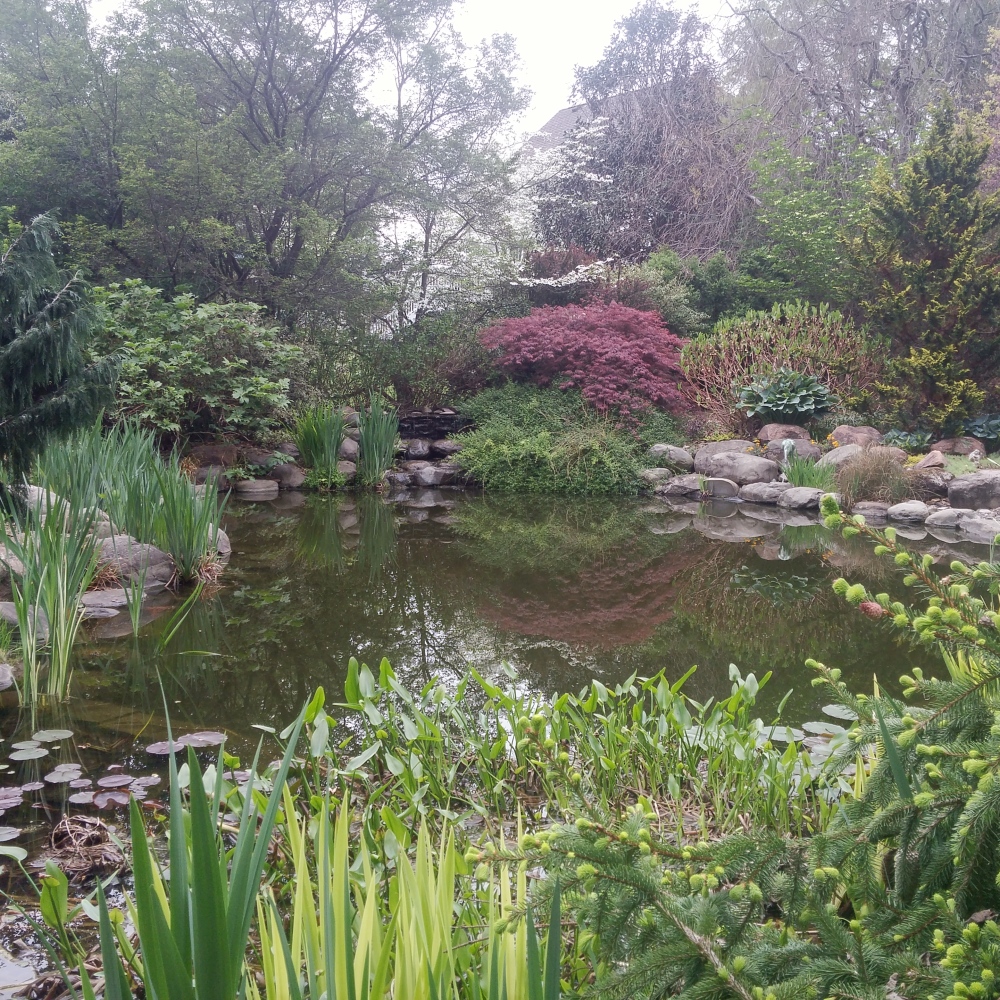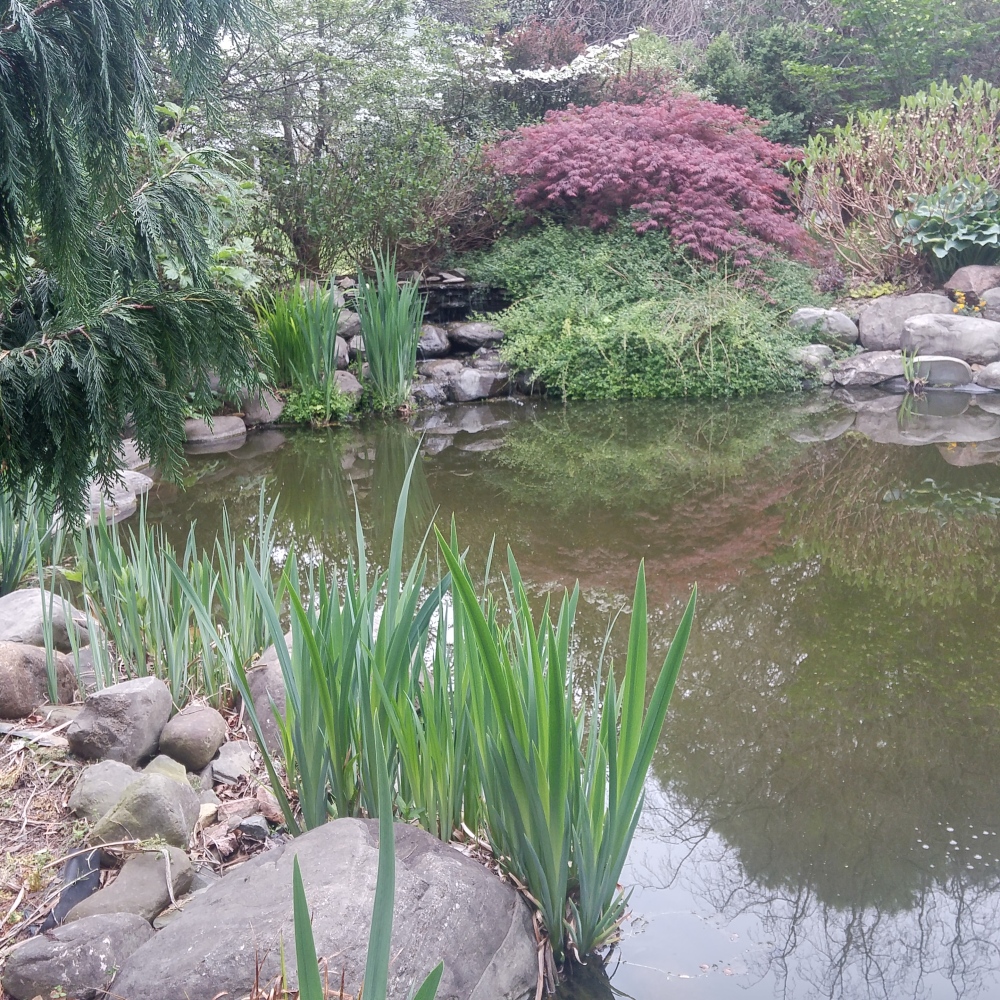Our snake is back. Two Northern Brown Water snakes terrorized the pond a year ago, or at least the two unsettled my wife, and made me watch every step along boulders that border the pond. The koi (and a few goldfish) seemed indifferent to the snakes. In this large pond, perhaps they are not a threat to fish, and feed only on frogs and other small creatures.
In late summer, the larger of the two met an accidental demise when struck by a stone I threw to shoo him away from the small boulder my wife stands on to feed the koi. Through my college days I was a pitcher with a pretty fair fastball, but never hit a thing I was aiming for, so I claim this as an accident. In any case, with one snake gone, the other disappeared for long stretches, and it was hoped he had moved on. Unfortunately not, but I have a plan to seal the voids beneath the boulders, and without this shelter our snake will either have to move on, or move beneath another boulder on the far side of the pond. There is hope for a peaceful resolution.

A small turtle has been seen perched on stones at the far edge of the pond. Perhaps this is one from eggs that were laid just outside the pond in summer last year, though my wife and I checked regularly and did not see evidence of the newborns. Turtles are occasionally seen in the pond, and usually stay for a few days and move on. This one is welcome to take up permanent residence.
There are approximately 157,238 tadpoles in the pond, though my count could be off by a few. The koi seem to pay no attention, and what happens to so many, I don’t know, though if all survived the planet would quickly be overrun by amphibians. Certainly, Northern Brown snakes could have something to do with diminishing the numbers.

Beginning late summer last year, the koi would rarely come up to feed, which I attribute to any of a number of potential predators that are regularly seen. Blue herons and smaller green herons are regular visitors, and hawks circle overhead constantly, on the lookout for the variety of prey that the garden attracts, I’m sure. Raccoons visit at night, often disturbing a sealed container of koi food, and I suppose that one or all of these pose a threat that would discourage koi from spending much time in shallow water.
The pond is four and five feet deep over most of it, and there are dozens, possibly over a hundred fish, so with the exception of a few koi with distinctive coloring, I would not miss one or many. I am pleased, however, that in recent weeks they have resumed greeting me as I approach the pond, knowing that a few handfuls of tasty pellets will be tossed out.
snakes are good! they eat voles, moles, and squirrels!! 🙂
It’s unfortunate that the best shelter for snakes is beneath boulders on the side of the pond where the people are. The two don’t mix well.
Can you post a picture of the snake. We found a snake by our pond and it may be a water snake too.
The few photos we have of the Northern Brown water snake are in the water and don’t show any detail. They’re not particularly aggressive, but I suppose any snake will defend its turf, and its turf and mine happen to occupy the same space. When first built the koi pond was a swimming pond with just a few fish, and as I floated in the pond the snakes would casually float past me.
How large is your pond that it can hold so many fish!? It is beautiful.
There are five ponds in the garden, with the koi pond about 1400 square feet. In the last few years I’ve netted smaller ones to move them to the smaller ponds and will probably continue that after babies arrive later this spring. There’s a formula for the number of fish per cubic foot, but this should vary with the type of filtration. As long as the water stays relatively clear of algae I figure I’m okay.
Your descriptive tales of your garden absolutely mesmerize me. I am not a fan of snakes of any kind, and I would agree that finding a way to discourage them is good thing.
Thank you for providing such wonderful garden news! Keep up the good work!
No one is going to comment on the ability to bean a water snake hard enough in the head that said water snake no longer exists? Are we reading the same post, people? That’s amazing!